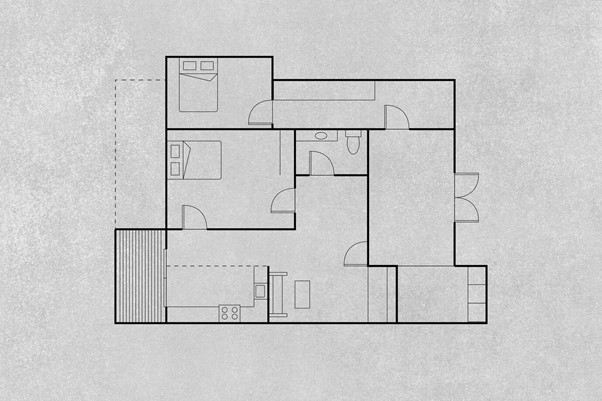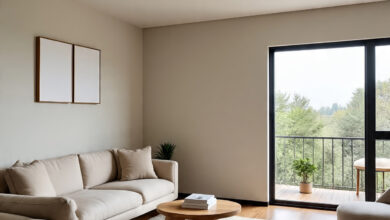From Idea to Reality: Bringing Your Dream Space to Life

Creating your dream space is an exhilarating journey filled with imagination, planning, and transformation. From the initial concept to the final product, designing a space that aligns with personal vision and lifestyle involves several key stages. This process balances creativity and functionality, combining aesthetics with practical considerations to shape a space that feels like an extension of its owner. Let’s explore the steps required to transform an idea into a tangible reality, including important design tools and strategies to bring a vision to life.
Clarify the Vision
The foundation of any successful design project begins with a clear vision. It’s essential to establish a detailed understanding of what the space should accomplish, both in terms of function and ambiance. This step is about defining the intended atmosphere, identifying essential features, and pinpointing specific needs for the space. For example, a dream kitchen might prioritize open counter space for meal preparation, while a home office may require a layout that minimizes distractions.
Mood boards are an effective tool during this stage, as they provide a visual representation of ideas and preferences. Creating a mood board with images, colors, and materials that resonate with the vision can serve as a visual anchor for the entire project, aligning the designer’s choices with the initial concept. Through this process, homeowners can begin to clarify their aesthetic preferences and define how the space should make them feel.
Determine the Budget
Budgeting is a vital part of turning a dream space into reality. The clarity established in the initial phase can now guide financial planning. Determining the total budget, dividing it across different areas (such as construction, furniture, and décor), and identifying potential areas for flexibility can help keep costs in check. By setting financial limits and identifying priority areas, the project can maintain focus without sacrificing essential features.
Unexpected expenses often arise during the renovation or design process, so it’s wise to set aside a contingency fund. Researching costs for materials, furniture, and professional services will help establish a realistic budget, avoiding unpleasant surprises and helping maintain the momentum of the project.
Conceptualize with a Floor Plan Creator
A crucial part of transforming an idea into reality involves translating it into a functional layout, and using a floor plan creator can significantly simplify this step. Floor plan creators are software tools that allow designers and homeowners to visualize the layout of a space, experiment with furniture arrangements, and evaluate flow and functionality. By creating a digital model, users can explore different layouts and adjust details before any construction or purchase decisions are made.
The floor plan creator enables accurate measurements, making it easier to experiment with various configurations. Many of these tools also allow users to view the space in 3D, offering a more immersive perspective on how the final layout will look. This visualization helps in recognizing potential obstacles or identifying areas that could use more space or structural adjustments. For example, if a design includes an open-concept layout, the floor plan creator can simulate traffic flow and reveal whether the space will feel open or congested.
Using a floor plan creator provides a level of precision and flexibility that would otherwise be challenging to achieve. It’s a powerful tool for reducing the guesswork and helping designers make informed choices based on spatial dynamics and aesthetic goals.
Select Materials and Finishes
The selection of materials and finishes plays a major role in defining the personality of the space. Choices in flooring, cabinetry, countertops, wall finishes, and textiles impact the room’s look and feel. These elements not only affect the visual appeal of the room but also influence comfort, maintenance, and durability.
When selecting materials, it’s essential to consider the balance between aesthetics and functionality. For instance, natural wood flooring provides a warm, timeless look but may require regular maintenance, while ceramic tile is highly durable and easy to clean, making it ideal for high-traffic areas or homes with pets. Colors and textures also contribute to the overall ambiance; light tones can make small rooms feel more spacious, while dark colors create a sense of coziness.
During this stage, visiting showrooms or requesting material samples is advisable. By experiencing textures and colors in person, designers can ensure that these choices align with their intended vision, creating a cohesive look that complements the rest of the design.
Focus on Furniture and Décor
Furniture and décor selections transform an empty room into a functional, welcoming space. These elements reflect personal style and influence how a room is used, contributing to its overall atmosphere. The choice of furniture should consider both aesthetic appeal and practicality. For example, modular furniture can maximize space in small areas, while a large sectional sofa might be perfect for a spacious living room where people frequently gather.
Choosing décor that aligns with the room’s function and style is equally important. Artwork, rugs, lighting, and plants bring character and warmth to a room. These items offer opportunities for self-expression, adding layers of personality and comfort. For those who prefer a minimalist look, carefully selected statement pieces can have a profound impact without overwhelming the space.
Considerations such as scale, proportion, and placement are essential for achieving harmony within the room. Oversized furniture in a small space may feel overwhelming, while small pieces in a large room could seem lost. The right arrangement ensures that each element complements the space rather than competing for attention.
Incorporate Lighting Design
Lighting design is often overlooked, yet it’s one of the most critical components in creating ambiance and defining the functionality of a room. The correct lighting scheme can enhance the visual appeal of the space, improve its functionality, and create a desired mood. Ideally, lighting should include a mix of task, ambient, and accent lighting to provide a well-rounded atmosphere.
Task lighting is essential for areas requiring focused light, such as kitchen counters or a reading nook. Ambient lighting serves as the primary source of illumination and typically includes ceiling fixtures or wall sconces that distribute light evenly throughout the room. Accent lighting adds depth and interest, highlighting specific features such as artwork or architectural elements.
Natural light should also be a consideration. Maximizing daylight through windows, skylights, or open layouts enhances the room’s atmosphere, reduces the need for artificial light, and creates a more inviting space. The use of dimmers can offer flexibility, allowing the light levels to be adjusted to suit different times of day or activities.
Implement Sustainable Choices
Sustainability in design is gaining importance as people become more environmentally conscious. Incorporating eco-friendly materials, energy-efficient appliances, and sustainable practices can make a meaningful difference in a home’s environmental impact. Using reclaimed or recycled materials, for instance, reduces waste and adds a unique character to the space.
Energy-efficient windows and appliances are also practical additions that reduce utility costs over time. Integrating natural materials such as bamboo or cork, or opting for non-toxic finishes, contributes to a healthier indoor environment. Embracing sustainability in design demonstrates responsibility and forward-thinking, ensuring the space remains valuable and environmentally friendly for years to come.
Bring the Vision to Life with Skilled Professionals
Professional help can streamline the design process, especially for complex projects requiring structural changes, electrical work, or plumbing. Interior designers, architects, and contractors provide expertise, guiding the project from conceptualization through completion. Skilled professionals offer insights, solve unforeseen challenges, and help navigate building codes or zoning regulations, ensuring a smooth transition from plan to finished product.
Collaborating with professionals also allows homeowners to benefit from their knowledge of materials, trends, and design principles. This expertise ensures that the final result aligns with the initial vision while maintaining safety and functionality standards. Regular communication with professionals keeps the project on track, addressing concerns and adjusting plans as needed.
Personalize and Finalize
The final step is personalizing the space to make it truly feel like home. After months of planning and hard work, adding finishing touches such as family photos, personal mementos, or unique artifacts can give the room a sense of identity and warmth. This stage allows designers and homeowners to reflect their personality, interests, and memories, transforming a beautifully designed room into a meaningful place.
Small details can make a significant impact. Simple additions, such as throw pillows, blankets, or seasonal decorations, make the room feel lived-in and inviting. These personal elements complete the space, marking the transition from a project to a cherished part of daily life.
Conclusion
Bringing a dream space to life is an exciting and rewarding process that involves planning, creativity, and attention to detail. From defining the vision to implementing a functional layout with tools like a floor plan creator, each step plays a vital role in realizing the initial concept. By combining aesthetic choices with practical considerations and, when necessary, the expertise of professionals, anyone can create a space that feels like a true reflection of themselves. With thoughtful planning and personal touches, the transformation from idea to reality can yield a space that not only meets functional needs but also nurtures well-being, inspiring and uplifting all who experience it.



